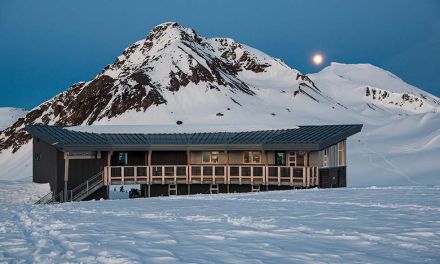Taking Flight
By Cara Williams, Photography by Clay Dolan
With state-of-the-art upgrades, the Collingwood Regional Airport is experiencing significant capital investment and expansion under new ownership. The one thing that remains unchanged is its location—a stone’s throw from golfing, skiing, and the world’s longest freshwater beach.
In September 1913 a young pilot was reportedly paid $25 to fly over the Great Northern Exhibition fairgrounds near Collingwood. The publicity stunt made headlines and attracted record crowds. After touching down a half mile away, the enterprising pilot offered plane rides for $1, much to the chagrin of the midway operators whose attractions sat idle while fairgoers flocked to marvel at the flying machine. This was arguably the first known aircraft to land in the grassy fields that would later be home to Collingwood’s regional airport.
For over a hundred years, the port of Collingwood has acted as not only an important point of access for railways and marine traffic, but has also had a significant impact on the country’s aviation history. At the beginning of World War II, Clyde Aircraft Manufacturing took over a factory previously occupied by Imperial Wire and Steel in Collingwood (the site that would later become home to Kaufman Furniture). Parts manufactured here were then sent to Europe, with the majority made specifically for the Canadian-built Mosquito Bomber aircraft.
In a seemingly political move to curb spending, Prime Minister John Diefenbaker famously and suddenly terminated the controversial Avro Arrow Project in 1959. The Arrow was an interceptor jet intended to engage and destroy the long-range nuclear bombers being developed after WWII. It was Canada’s first supersonic aircraft, and is considered by many to have been one of the most highly advanced technological achievements by the Canadian aviation industry. February 20th, 1959 was dubbed “Black Friday”, as everything related to the Arrow was ordered to be destroyed and/or scrapped. The Martin-Baker Aircraft Company had a licensed facility in Collingwood during the 1950s and built assembled ejection seats for the twinjet interceptor/fighter, the Avro Canada CF-100 Canuck. Conflicting accounts hold that ejection seats constructed here may also have been made for the legendary Arrows. To this day the actual reason for the cancellation of the Project remains an urban aviation myth.
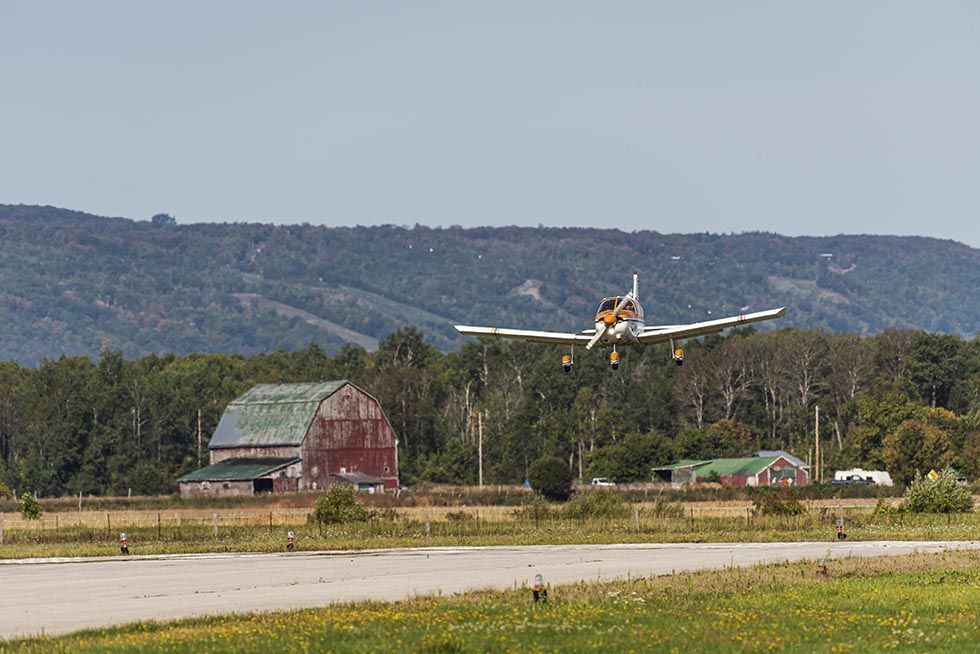
It was 1966 when the Canadian federal department of transportation officially approved the site for Collingwood’s airport. Located 8km south of town, in the former Township of Nottawasaga (now Clearview Township), the Town of Collingwood purchased the property for $67,749. The original “soft field” grass runway was built in 1967 and by 1970 Collingwood began providing aviation services and facilities under the Transport Canada identifier CNY3. In 1974 the runway was rebuilt and paved with federal funding assistance, and by the early 1980s the Town invested $74,993 to purchase an additional parcel of land. By the end of that decade a small public apron was constructed alongside the 3,000 ft runway, including a public terminal facility with a restaurant where hungry pilots and travelers could grab a quick bite. Jimmy’s Kitchen (as it is known today) is a favourite among local aviation enthusiasts—the Collingwood Flying Club regularly attends their Thursday lunches to exchange flying stories over a hot meal. In 2009 the runway was extended enabling larger aircraft to land and ten years later, in 2019 the airport was sold by the Town of Collingwood to Winterland Airfield Holdings. Under the new ownership the airport has seen significant enhancements, ushering in a new era of aviation.
“Over the last four years Winterland has made huge capital improvements that have attracted businesses and corporate aircraft operators to the airport,” says Brendan Skidmore, Field Boss, Collingwood Airport. “There has been an increase in traffic from the corporate sector, improving the balance sheet and providing jobs and revenue for the region. Levaero Aviation Group and Big Blue Air are our biggest partners. You should see the flying done by Big Blue’s helicopters. I would encourage everyone to take a ride with them and see the Escarpment from the air—it’s magic! Levaero is also an amazing business. They support and represent Pilatus Aircraft out of Switzerland and they are a class on their own. Our Airport is attractive to them because we provide great service and new facilities at a competitive price, plus you can’t beat our location as a place to work, live and fly!”
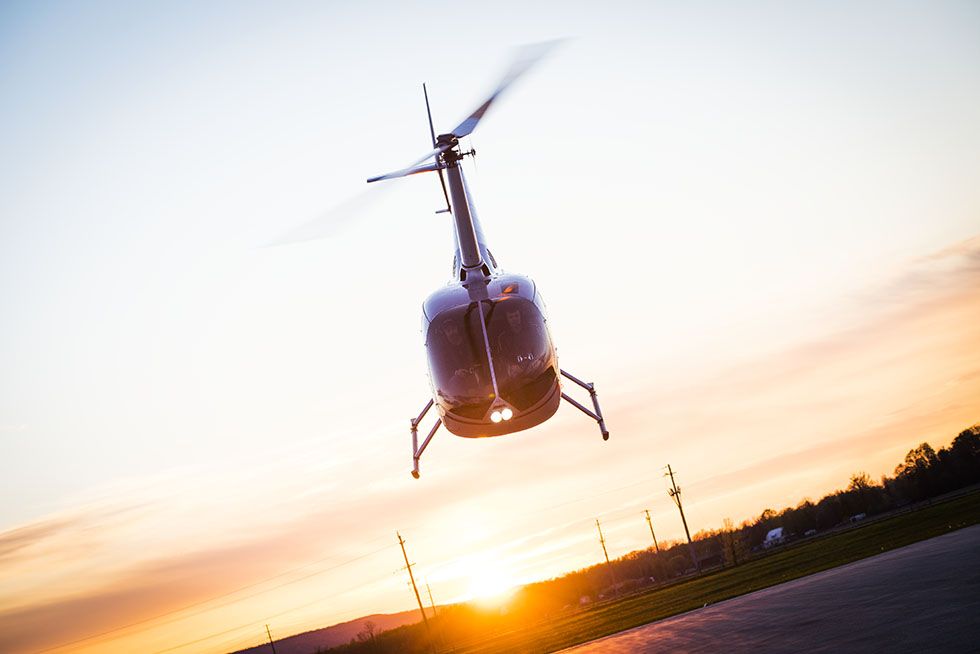
Levaero Aviation officially landed at the Collingwood Airport in April 2022. Based in Thunder Bay, Levaero has a national sales office in Toronto but has had a presence in the Collingwood area with charitable ties to Special Olympics and the 24-Hours of Blue Mountain, which raises funds for the Collingwood General & Marine Hospital Foundation. Levaero’s new 18,000-square-foot hangar provides support to Pilatus aircraft owners, as well as other turboprop and jet operators in need of a maintenance provider. The company also assists customers in acquiring and selling aircraft.
“Our new facility at the Collingwood Airport is the latest in our expansion plans to support our growing customer base,” says Stan Kuliavas, Levaero Aviation Vice President Sales. “As the first major OEM authorized dealer and IADA accredited broker located at the airport, we look forward to serving our existing customers in the region, as well as assisting others with their aviation needs. It’s a friendly place to be, and strategically, it’s a great spot—close to Toronto, but far enough away that you don’t have to deal with some of the challenges that come with being right in the city.”

Big Blue Air has been based in Collingwood since 2015 offering sightseeing tours and aerial photography—their highly skilled pilots are known for positioning the aircraft in order to achieve the perfect midair shot. With two helicopters and one fixed wing Pilatus airplane, their service menu also includes VIP and corporate travel, as well as experiences such as “Fly & Dine” trips to Georgian Hills Vineyard and Cobble Beach. Owner Marcus Vogel says the aviation industry has experienced healthy growth, spurred on by the end of Covid-19 restrictions. “Customs is back at the Collingwood Airport,” says Marcus. “During midweek business hours, flights are landing here from New York City, Boston, Naples, Miami, Chicago, Europe and South America. As long as aviation stays strong there is a ton of potential for future developments in Collingwood. As the town continues to grow in tourism, so do we.”
Brendan Skidmore agrees; “I have been working here for several years and it’s been a whirlwind of growth and change. There is a new young team in place—all of us under the age of 35—managing operations and servicing customers. The energy and professionalism they bring to the airport is amazing. Our goal is to be a pilot’s airport, so we service everyone from the pilot who flies a home-built aircraft right on up to the RCAF’s giant Hercules. We have planes coming from all over the world now that we have the proper facilities. It’s fabulous to see a $60 million private jet fly in from Europe or South America. It can get pretty crazy in our airspace, especially when you add in a plane or two from Genesis Flight College.”
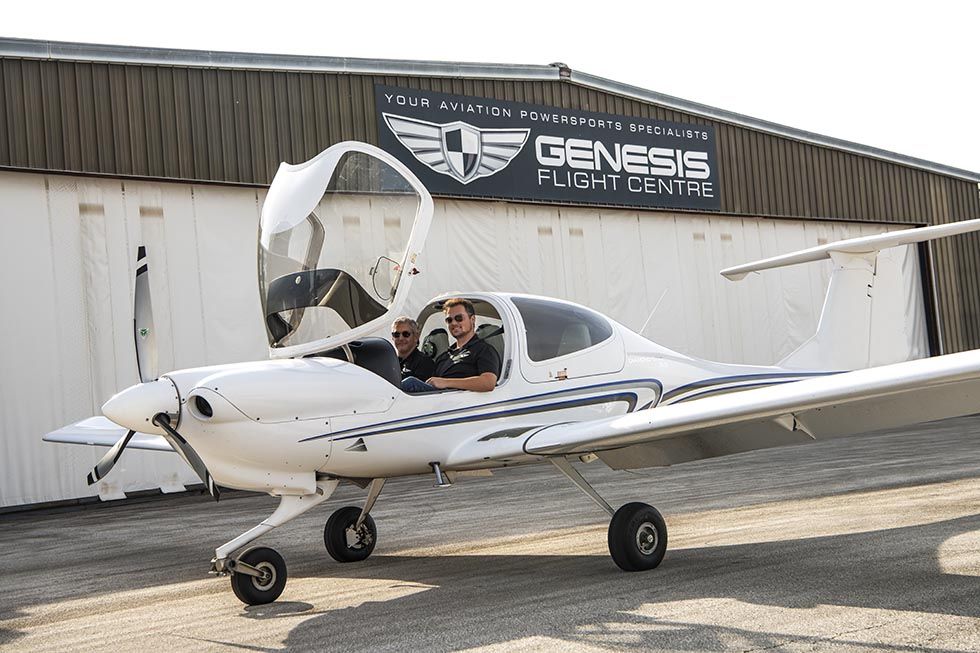
If you’ve ever been curious about flying, Genesis Flight College makes earning a commercial or private pilot’s license a reality, with some of the most advanced training equipment in Southern Ontario. Under the supervision of a qualified flight instructor, Genesis lets students take control of the aircraft, learning basic maneuvers like how to turn, climb, descend, and control speed. And because Collingwood is a regional airport, student pilots don’t have lengthy air traffic control delays or long waiting times to take off or reach the practice area. The leisurely nature of the Collingwood Airport also provides a more relaxed training atmosphere.
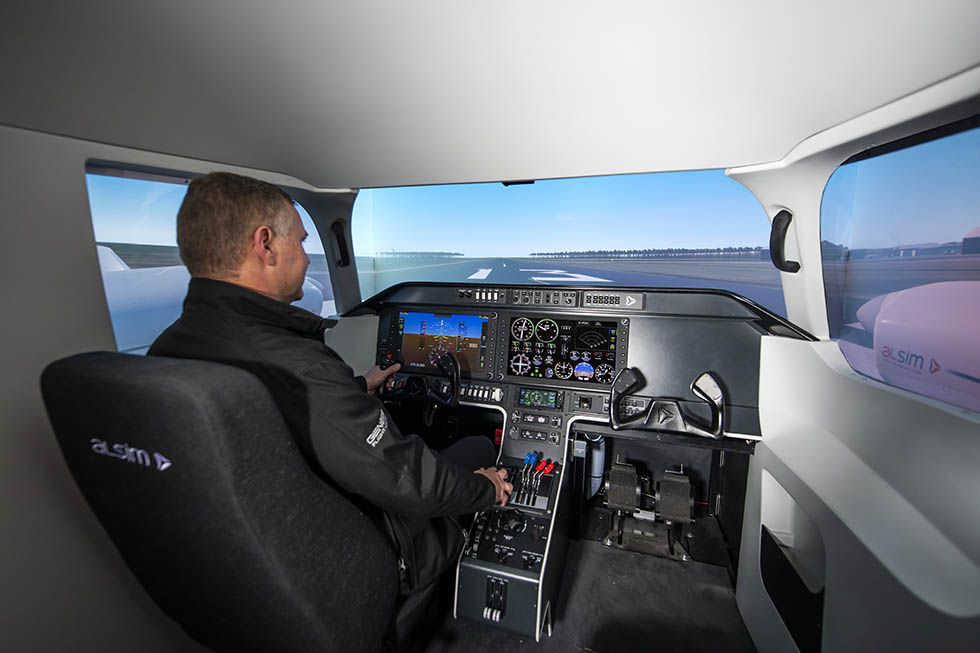
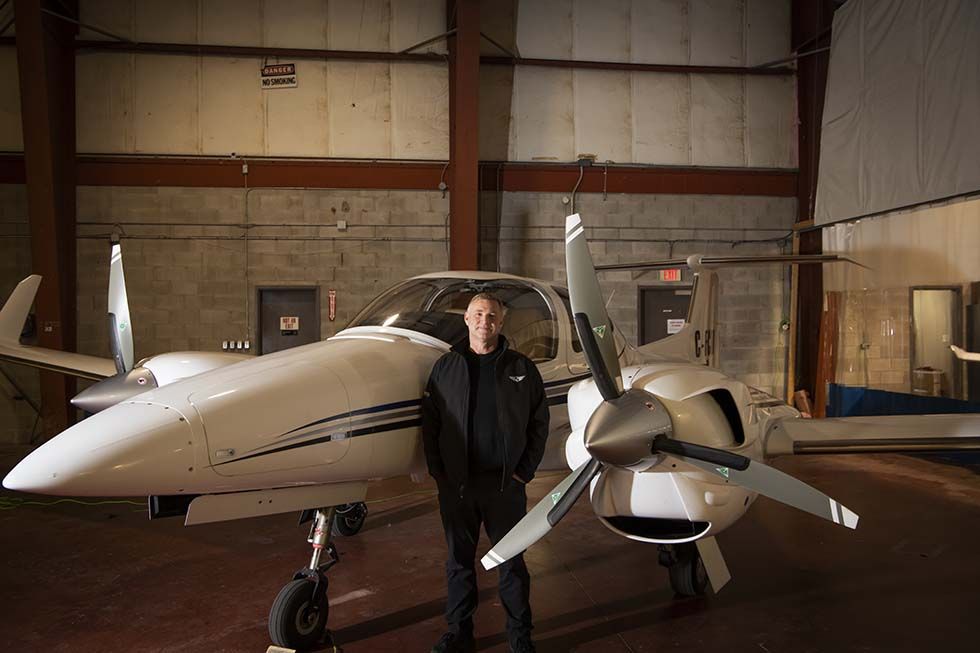
“Airports are capital intensive and tricky to operate,” notes Brendan. “There are many moving parts and it’s important to attract the right businesses. We have had a great relationship with Clearview Township and they recognize what a great asset we are to the community. We intend to grow and serve our region, and we look forward to some exciting projects in the near future.”



